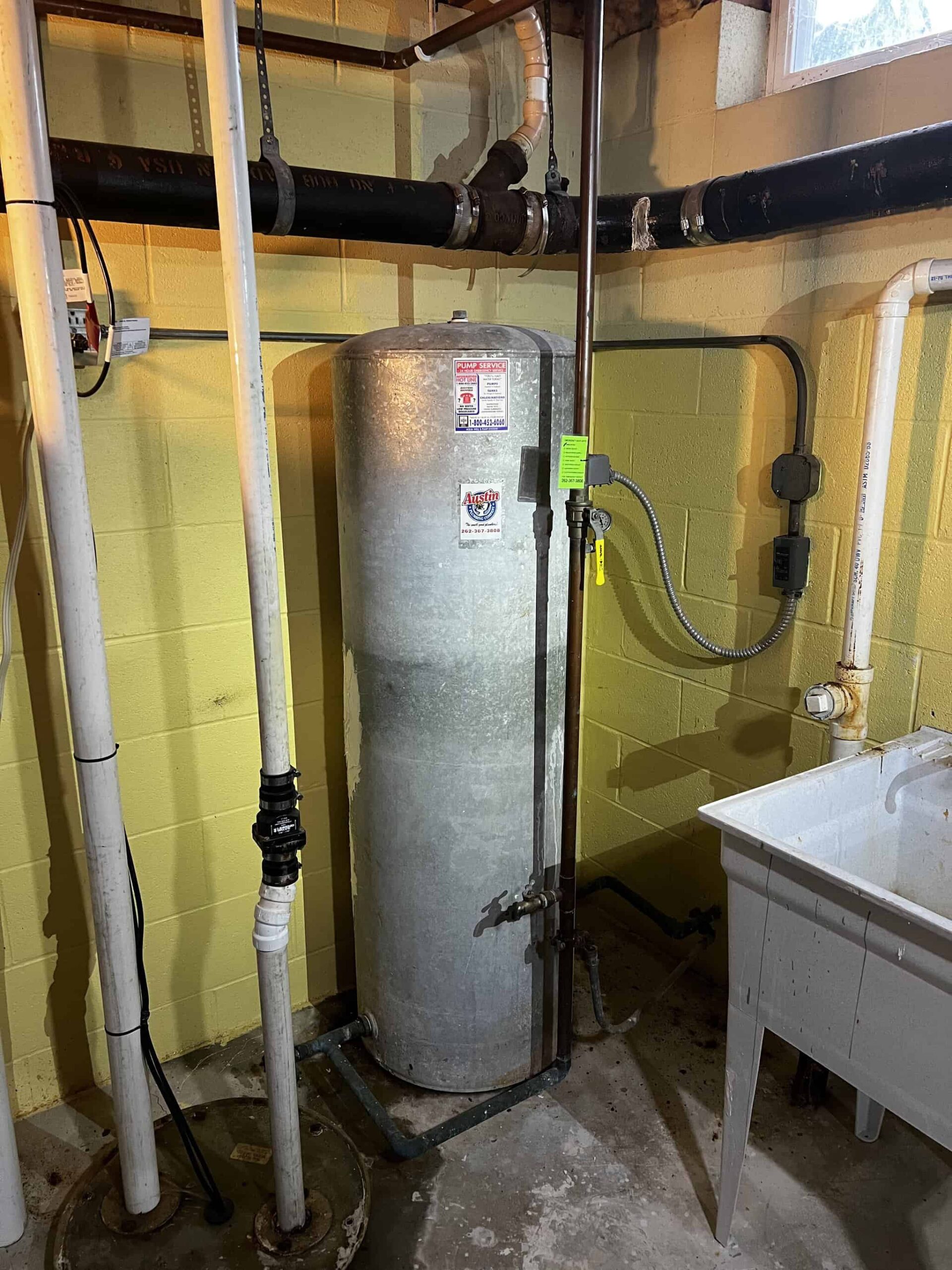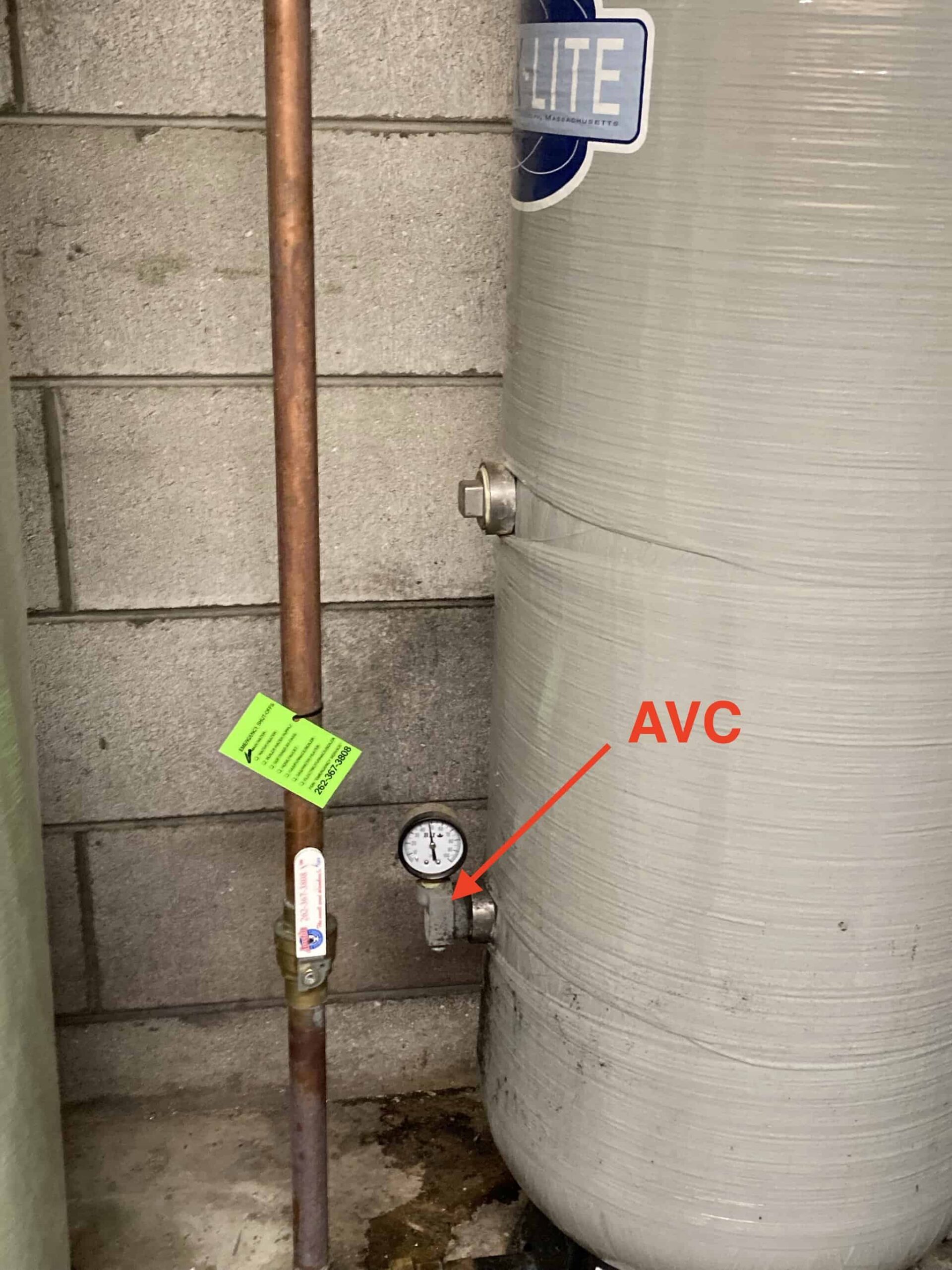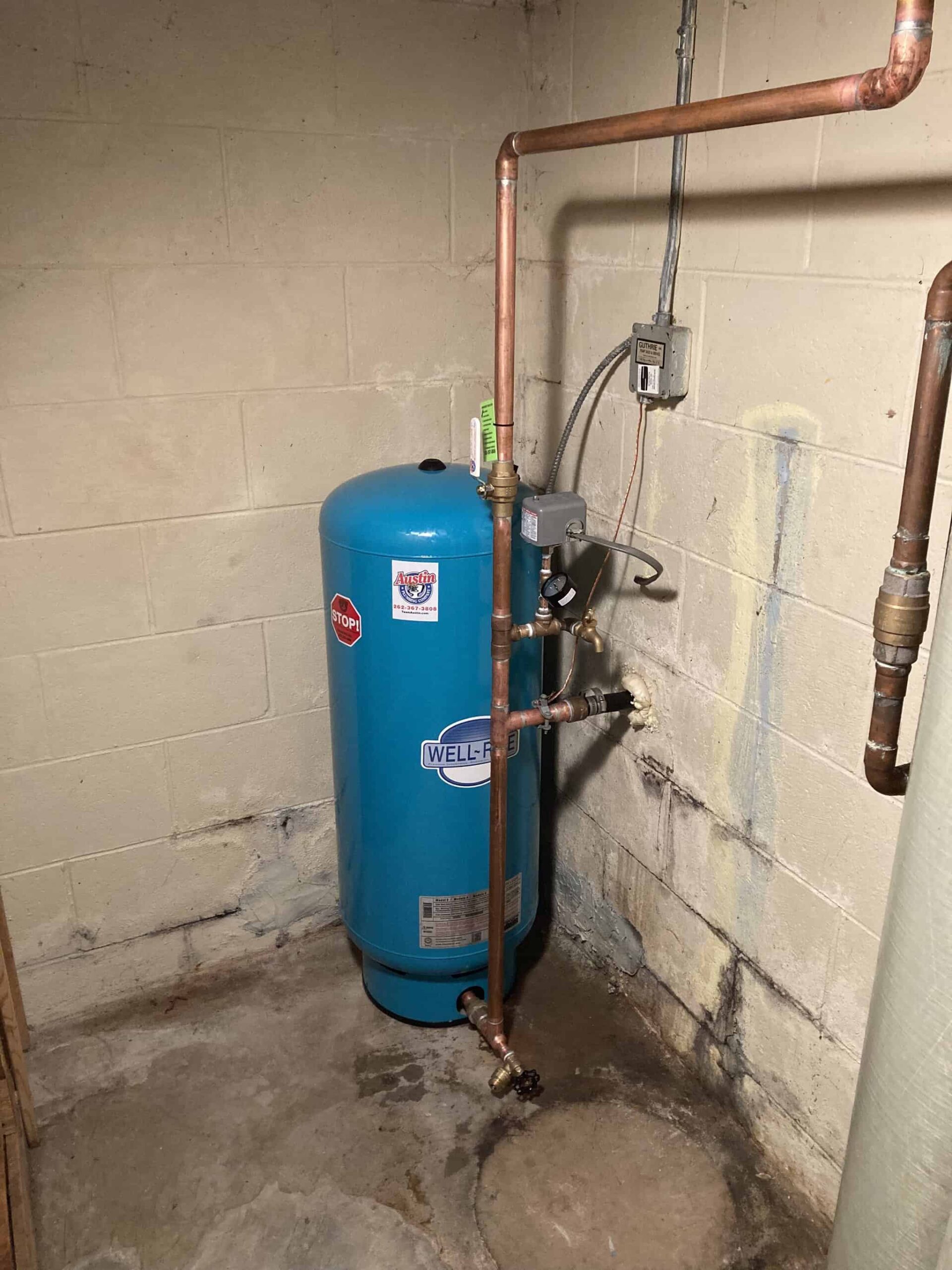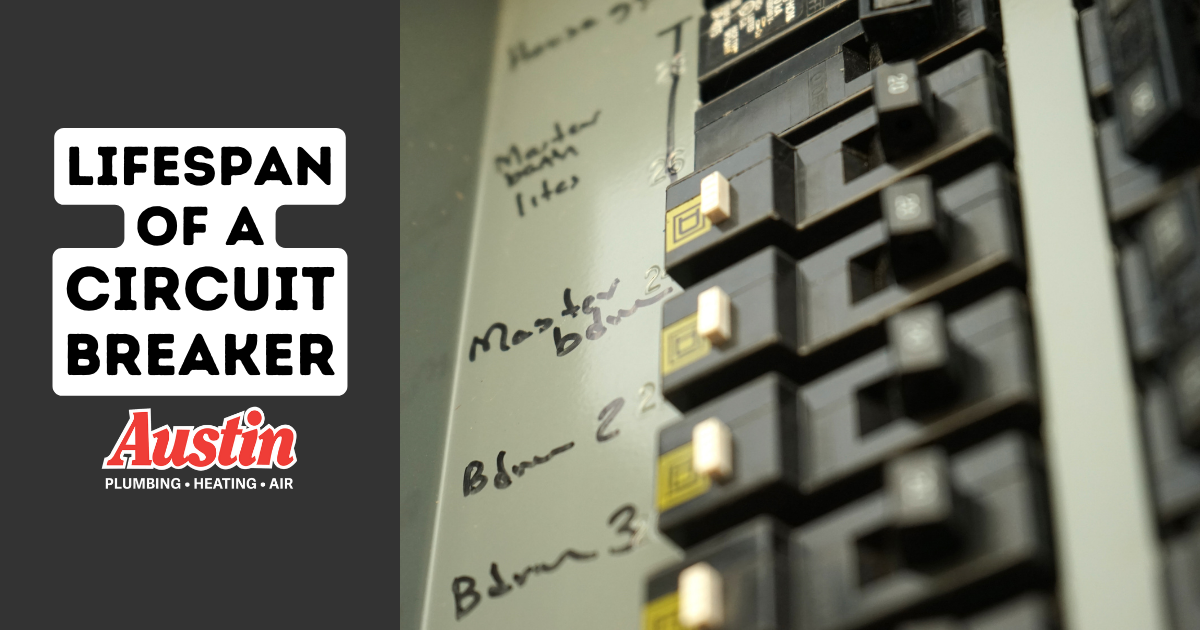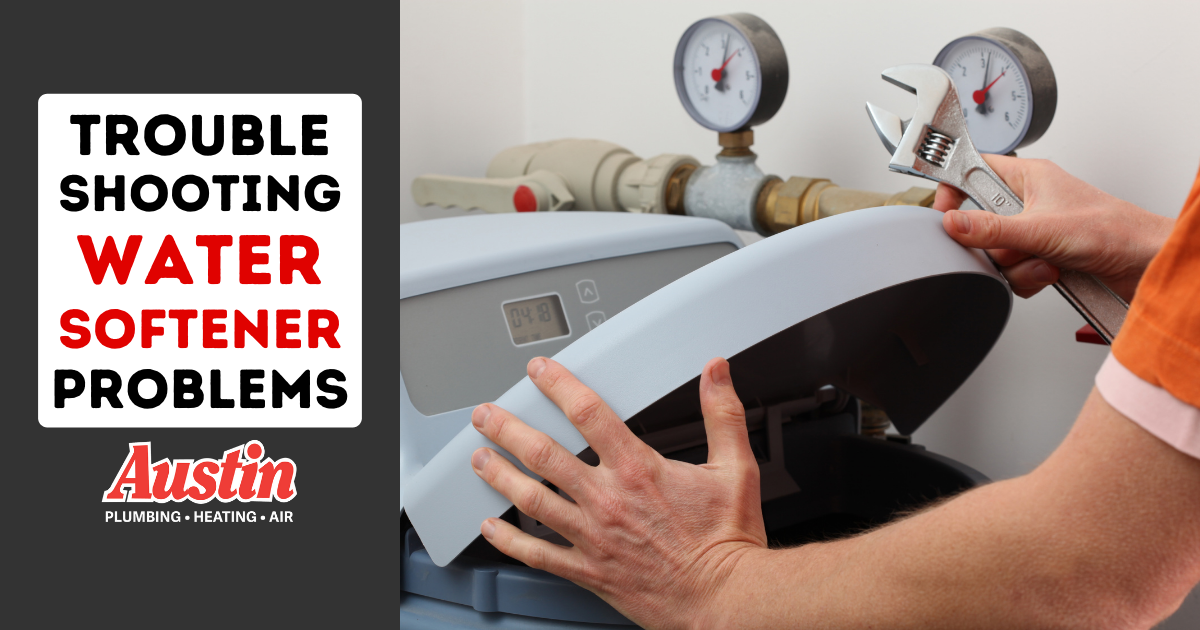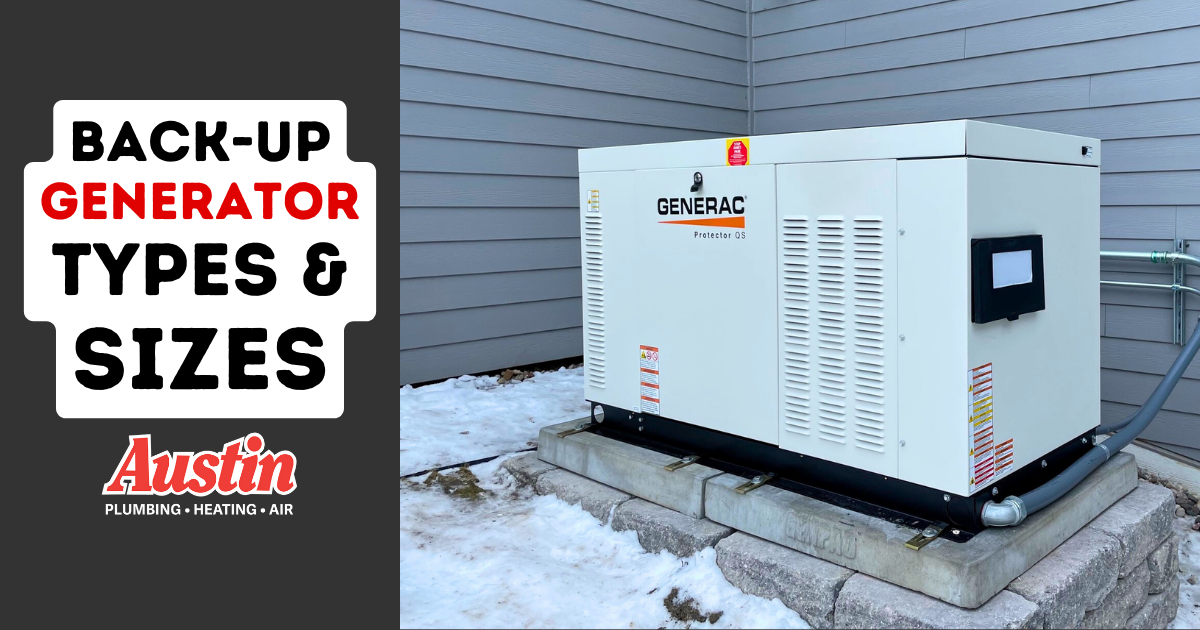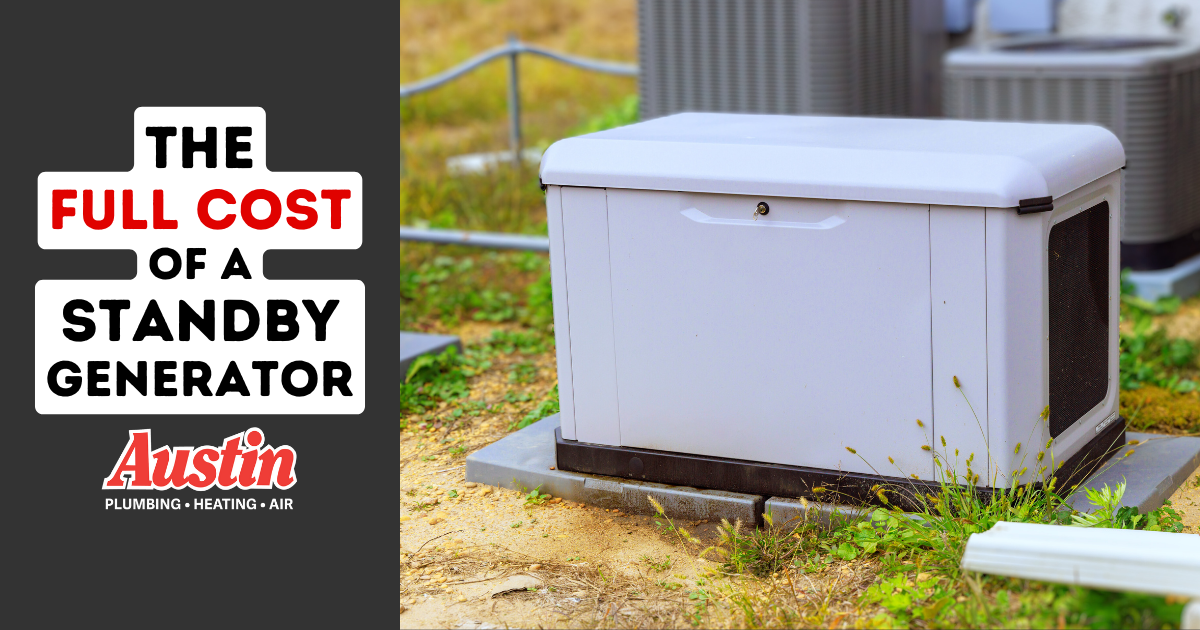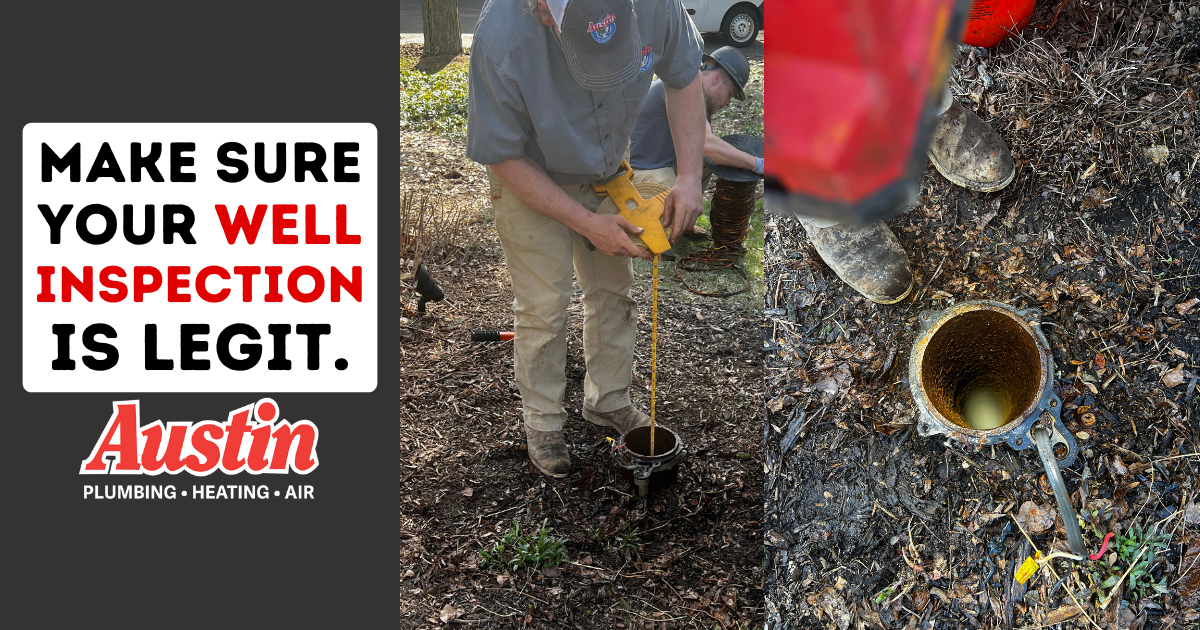The Four Different Types of Well Pressure Tanks
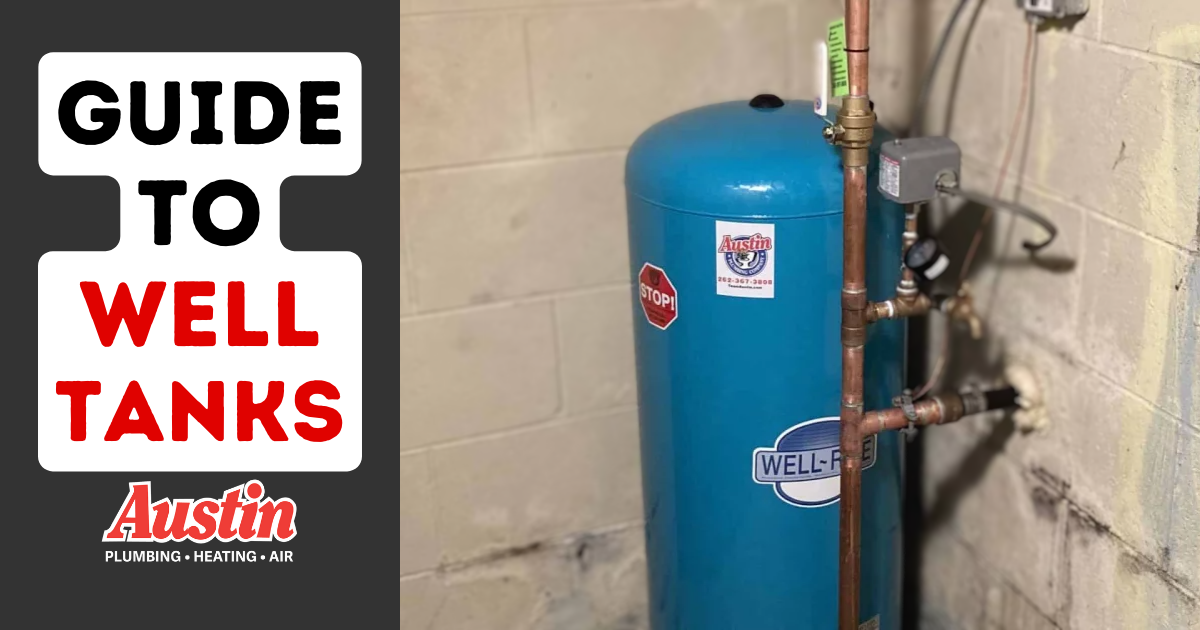
Straight Talk From Wisconsin’s Master Tradesman.
Every home plumbing system involves both a well pump and its counterpart, the well pressure tank. While we typically think of the pump as the one delivering water directly from the well to your home, the water that is immediately available to you is actually stored in the pressure tank.
What’s the Point of the Pressure Tank?
The pressure tank serves as a necessary buffer between the well pump and the well itself. Put simply, it’s what saves your well pump from overworking itself to the point of failure.
Overheating can degrade any well pump and ultimately cause it to fail, but the ignition of the motor inevitably generates heat. To regulate the temperature of the well pump and the water that comes through it, engineers came up with a two-part solution:
- First, every time your well pump turns on, it will continue to run for at least 30 seconds to allow some heat to dissipate.
- Second, water drawn from the well during this time is introduced into a “holding zone” where it remains available instead of going to waste.
This way, the well pump doesn’t have to turn on and off every single time we brew coffee, brush our teeth, or wash our hands. Pretty useful, right?
The Four Different Types of Well Pressure Tanks
As we get a basic look at the different types of pressure tanks on the market, we’re really looking at how they deal with the solubility of oxygen in water. Here are a few things to consider:
- By nature, air that makes contact with water will eventually dissolve into it.
- Added heat increases the dissolution of the air into the water.
- Higher concentrations of oxygen make for water that is more corrosive to your plumbing system.
Now we’re ready to see how different tank styles work (or don’t work) to mitigate corrosion and keep your plumbing in tip top shape.
Style #1: Air-Over-Water Pressure Tanks
The first and the simplest, an air-over-water (AOW) pressure tank can last roughly six to eight years. It’s usually built of galvanized steel, which is susceptible to oxidation (rusting). To squeeze out a couple more years of use, modern variations of this tank are sometimes made with fiberglass, which doesn’t rust.
How it works: The way this type of pressure tank functions is that it is first pre-charged with compressed air. When the water flows into the tank, that precharge of air is compressed at the top of the tank-creating a situation where about ⅔ of the well tank is full of water while the remaining ⅓ is air.
Pros: Simple to install.
Cons: Air-over-water tanks are especially prone to failure. They tend to require maintenance on a biannual or even quarterly basis just to reach the upper limit of their life expectancy. They continually have to be recharged with air, and their propensity for waterlogging will always be an issue. For all of these reasons, AOW tanks have basically become obsolete.
Style #2: Diaphragm Style Pressure Tanks
There’s one major difference between air-over-water and diaphragm style pressure tanks: the Merrill float.
How it works: The Merrill float functions as a barrier between the air and the water in your pressure tank. This device allows diaphragm style tanks to reduce the amount of direct contact happening between the air and water.
Pros: Since reduced surface area slows the pace of chemical reactions, diaphragm style pressure tanks don’t need to be recharged as often as AOW tanks.
Cons: Unfortunately, the longevity of a diaphragm tank still leaves something to be desired, and it still takes pretty regular maintenance to stay running up to spec. It has ultimately the same failure points as its less-sophisticated predecessor.
Style #3: Air Volume Control Pressure Tanks
The air volume control (AVC) design represents humanity’s first crack at creating a truly maintenance-free well pressure tank. This tank works in conjunction with “bleeders” that are also installed in the well, while a third device, the air volume control, is installed on the tank itself.
How it works: Bleeders are devices that introduce a consistent amount of air into the well pressure tank whenever the well pump turns on, while the air volume control “bleeds off” any extra pressure by keeping the pressure tank constantly injected with air.
Pros: The theory behind the air volume control style pressure tank was almost revolutionary. In practice, it even prevented a lot of the maintenance required by regular pressure tanks. This was understandably very popular in the late 80s and early 90s, when it was the frontier innovation in well pump system technology.
Cons: The complexity of this system came with its own share of problems. A higher number of moving parts meant more potential points of failure, which ended up requiring as many repairs as it prevented, albeit in different forms. And even with proper upkeep, the AVC pressure tank had a tendency to fail. This invention, despite its ingenuity and short-term success, would eventually be replaced by the next item on our list.
Style #4: Bladder Style Pressure Tanks
How it works: Bladder style tanks don’t just create a partial physical separation between the air and water in the tank; they actually maintain 100% separation between the air pre-charge in the tank and the water in the system. Because there’s no chance for reactive contact between the element and the compound, the water never gets diluted by any additional oxygen whatsoever.
Pros: The bladder style tank is substantially more efficient and delivers greater water pressure than any other style of pressure tank that exists. Impressively, it still manages to be virtually maintenance free. It also offers the highest longevity of all well pressure tanks by design.
Cons: Frankly, the only downside to this type of tank is that it can be somewhat costly to install when converting from an older system. Nevertheless, the long and short-term benefits of upgrading to a bladder style tank objectively outweigh its price tag. Air-over-water, diaphragm style, and air volume control tanks just can’t compete with the merits of the bladder style pressure tank.
What Is The Best Type Of Well Pressure Tank?
The final decision is always yours! Austin Plumbing, Heating & Air recommends a bladder style pressure tank for most customers, but we’re more than glad to review your other options with you and make sure we’re addressing the needs of your home. Is it time to replace your old well pressure tank? Are you just looking to get your current pressure tank repaired? Either way, you’re in good hands. Learn more about the water well services we provide.
